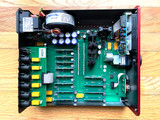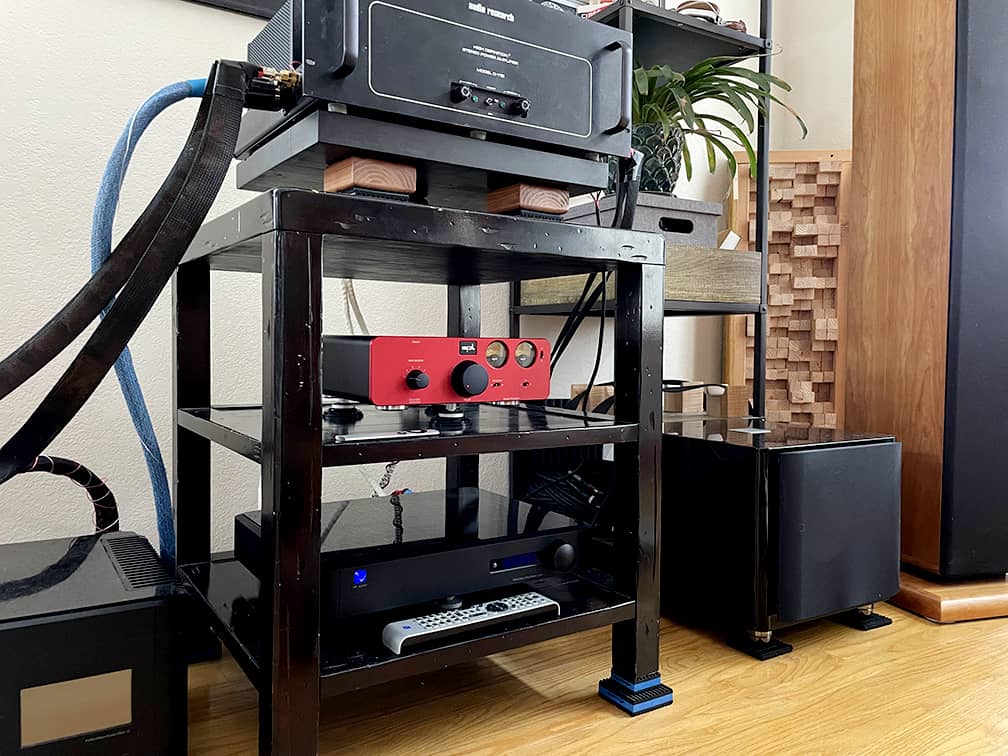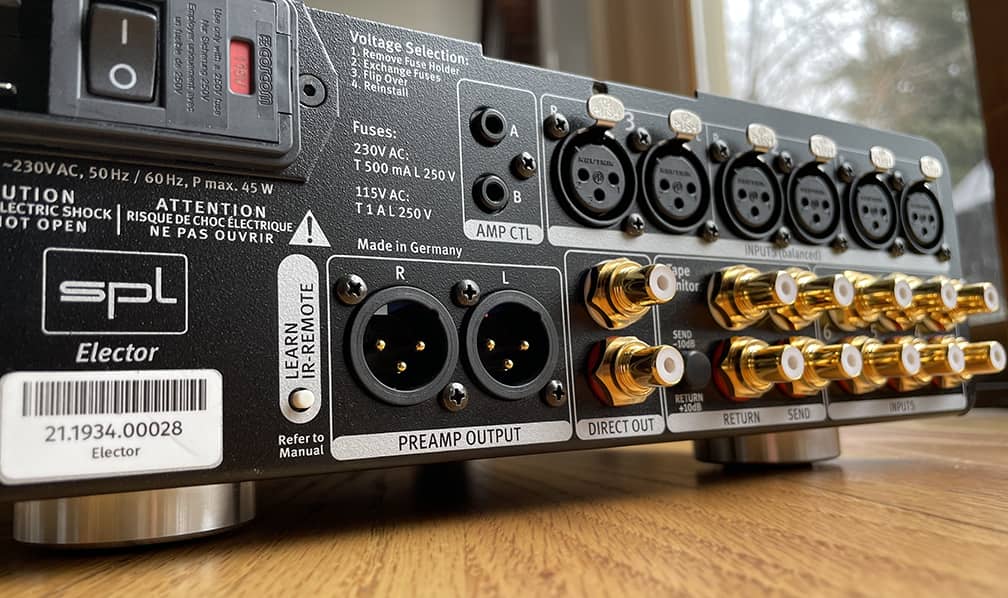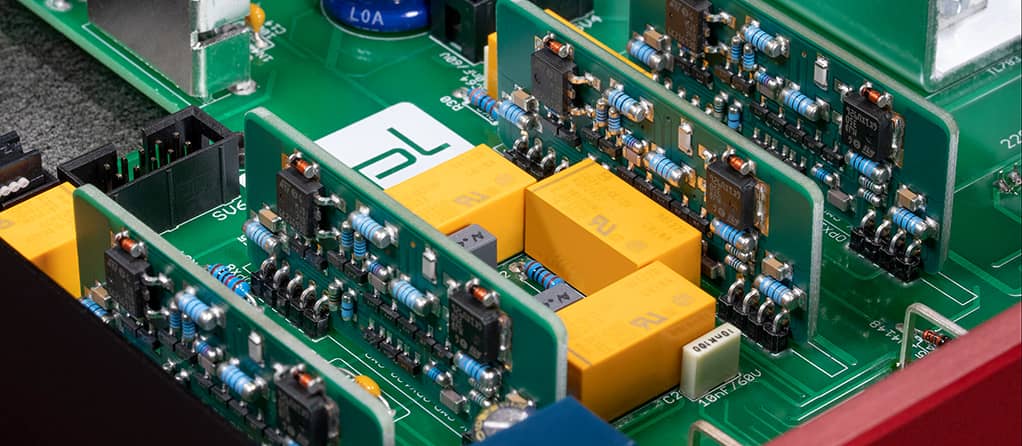TMR Exclusive Review: SPL Elector Preamplifier, Part 3

When looking at the SPL Elector, it is hard to find a good reason this preamplifier is priced where it is, and this sense is amplified at first listen. I'll get to the listening in a moment, but first, let's look at the makeup of the Elector and try to understand how the German pro audio brand was able to put such a high-performance product together and export it at that price.
Design & Tradeoffs

I chose a red faceplate to review for several reasons. The satin glass-blasted sheen and softened edges allow the red to absolutely pop in a luxurious way. I have an otherwise black system arranged on a fairly dark wood rack, and my decision to go red in the center for the preamplifier was endorsed immediately by my wife, Erin.
She doesn't often comment about the stereo system which dominates the first room to the right as you enter our house, except to occasionally mention that her parents don't quite understand why it must be so large. I totally get it and am thankful she hasn't tried to relegate my hobby and passion – which do play a significant role in my professional life, naturally – to the basement area, so I'm careful to not push the envelope too much. The ceilings and the open nature of the room make it the best for listening, and I've been fortunate to have such a prominent spot for the gear I lovingly assembled and/or made myself.
"That looks really cool," she said as soon as I had placed the red Elector into position.
"Hell yeah!" I thought to myself, though out loud it was more like, "Pretty slick, huh?"
The Elector's thick faceplate features lighted meters to the right as the next most forward design feature. She thought they were cool, too.
Two knobs, one satisfyingly large and obvious as the main volume in the center of the front, and a few switches make up the rest of the Elector's front-facing features. "Spoon in the honey" is how SPL describes the feeling of its volume knob, indicating a motor-assisted potentiometer for the duty.
Now is where we get to the potential trade-off and a first entry in the shortlist of cost-saving measures. This high-performance Alps potentiometer may be standard and even preferred in the pro audio world, but an audiophile with a high-end system like me might prefer something like an expensive stepped attenuator or a relay-controlled resistor bank like those used in many high-end preamplifiers for the duty.
"Okay," I'm thinking. "Now I'm starting to understand where the money is spent on this device." A light rap of the knuckles on the top cover reveals a fairly thin-walled and relatively resonant chassis as well.
Looking at the back, high-quality chassis-bolted RCA jacks and strong-looking Neutrik chassis-mounted XLR jacks exude intentional expenditure. They are refreshing to see instead of the cheaper connectors that could have been chosen.
From the outside, it appears that these decisions were made to bring this product to market as an extreme value in its class. Costs were saved in places where their effect would be least felt. While I would prefer a different approach for the volume control, I'd rather that the sonic performance be paramount. All things considered, I think the "pot" and the chassis are reasonable compromises. And I do note that a plastic faceplate with no meters would not have engendered the kind of attraction my wife showed, which is valuable to me.
I like what I see from the build quality of the Elector, and it’s time to plug this beauty in and see how it performs in use. But before that, there’s one more intriguing feature up the preamp’s sleeve, which deserves to be appreciated and explained.
Hello, Old Friend
In front, hidden in the meter area is an IR receiver for a remote control, and the backplate features a curious small white button marked "Learn IR-Remote."
By pressing the white button with the volume turned down (it will motor its way down if it's not already), the Elector can "learn" just about any remote control's signal. You aim one at the meters and press the down-volume button over and over until the LED on the volume knob blinks four times. You then press the up-volume button repeatedly until the same indication from the LED lets you know the remote is learned.
In my house, we long ago moved from Apple TV as our living room "idiot box" provider (sorry, couldn't resist) to Amazon Fire. I remembered that I loved holding the diminutive bead-blasted aluminum Apple remote much more than the plastic one from the shipping giant. I thought it was a perfect reason to pull the curvy little guy out of retirement from the basement shelf.

A few clicks between LED pulses later, and it was back in action as my preamp's volume control. I like to personify electronics a bit – forgive me – but I have to imagine the cute little remote is happy to be out of its basement purgatory and back into warm, appreciative hands once again.
Not only could I now control the volume from nearly 20 feet away, but its responsiveness was impressive. What a happy little remote. Don't tell it, but I wish it were red to match the unit perfectly, even if its finish and curves were a dead ringer for the Elector.
Internally Charged
I won't get too deep into the weeds about the Elector's technology. I think SPL does a fine job in its product descriptions and accompanying videos on its YouTube channel to explain the 120-volt "Voltair" DC rail technology that characterizes its internal operational amplifiers.
The Elector’s preamp gain is supplied by these operational amplifiers, known more commonly as “op-amps.” The ones in this device are a little different from others, and a relatively low amount of feedback is employed for best sonic performance.
There is a lot of variation in the market regarding op-amps. Some, like the Weiss Engineering OP2-BA or the offerings by Sparkos Labs, are currently pushing state of the art. This is a bit of a hot spot in audio product development right now. SPL similarly designs its own op-amp, called the Supra. It uses large discrete components rather than surface-mount elements, allowing for a higher operating voltage, which, in turn, supports a better signal-to-noise ratio and wider dynamic range.
To my mind, I'm not sure why 120V, or 60V+ and 60V- would make a difference when we're talking about small-level signals in the millivolts, but I'll leave that to the engineers to discuss. I can only witness how it performs in action, which is quite well.

